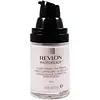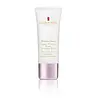What's inside
What's inside
 Key Ingredients
Key Ingredients

 Benefits
Benefits

 Concerns
Concerns

 Ingredients Side-by-side
Ingredients Side-by-side

Dimethicone
EmollientIsododecane
EmollientWater
Skin ConditioningTrisiloxane
Skin ConditioningPEG/PPG-19/19 Dimethicone
EmulsifyingC13-16 Isoparaffin
SolventIsodecyl Neopentanoate
EmollientSilica Silylate
EmollientDimethicone Crosspolymer
Emulsion StabilisingC10-13 Isoparaffin
SolventSilica
AbrasiveGlycerin
HumectantMethyl Methacrylate Crosspolymer
Triethoxycaprylylsilane
Methicone
EmollientCalcium Aluminum Borosilicate
Tocopherol
AntioxidantPhenoxyethanol
PreservativeCaprylyl Glycol
Emollient1,2-Hexanediol
Skin ConditioningCI 77891
Cosmetic ColorantIron Oxides
Dimethicone, Isododecane, Water, Trisiloxane, PEG/PPG-19/19 Dimethicone, C13-16 Isoparaffin, Isodecyl Neopentanoate, Silica Silylate, Dimethicone Crosspolymer, C10-13 Isoparaffin, Silica, Glycerin, Methyl Methacrylate Crosspolymer, Triethoxycaprylylsilane, Methicone, Calcium Aluminum Borosilicate, Tocopherol, Phenoxyethanol, Caprylyl Glycol, 1,2-Hexanediol, CI 77891, Iron Oxides
Dimethicone
EmollientPolypropylene
Water
Skin ConditioningIsodecyl Neopentanoate
EmollientCyclopentasiloxane
EmollientIsohexadecane
EmollientTrimethylsiloxysilicate
EmollientPEG/PPG-19/19 Dimethicone
EmulsifyingC13-16 Isoparaffin
SolventDimethicone Crosspolymer
Emulsion StabilisingPropanediol
SolventSilica Silylate
EmollientDimethicone/Bis-Isobutyl PPG-20 Crosspolymer
Emollient1,2-Hexanediol
Skin ConditioningAloe Barbadensis Leaf Extract
EmollientBioflavonoids
Skin ConditioningBrassica Oleracea Italica Extract
AstringentC10-13 Isoparaffin
SolventCaprylyl Glycol
EmollientPolysilicone-11
Tocopherol
AntioxidantTrisiloxane
Skin ConditioningPhenoxyethanol
PreservativeDimethicone, Polypropylene, Water, Isodecyl Neopentanoate, Cyclopentasiloxane, Isohexadecane, Trimethylsiloxysilicate, PEG/PPG-19/19 Dimethicone, C13-16 Isoparaffin, Dimethicone Crosspolymer, Propanediol, Silica Silylate, Dimethicone/Bis-Isobutyl PPG-20 Crosspolymer, 1,2-Hexanediol, Aloe Barbadensis Leaf Extract, Bioflavonoids, Brassica Oleracea Italica Extract, C10-13 Isoparaffin, Caprylyl Glycol, Polysilicone-11, Tocopherol, Trisiloxane, Phenoxyethanol
Ingredients Explained
These ingredients are found in both products.
Ingredients higher up in an ingredient list are typically present in a larger amount.
1,2-Hexanediol is a synthetic liquid and another multi-functional powerhouse.
It is a:
- Humectant, drawing moisture into the skin
- Emollient, helping to soften skin
- Solvent, dispersing and stabilizing formulas
- Preservative booster, enhancing the antimicrobial activity of other preservatives
C10-13 Isoparaffin isn't fungal acne safe. It can be bad for oily skin.
This ingredient is a solvent, texture enhancer, and emollient.
Solvents help other ingredients dissolve in a product. It adds a 'silky' texture to products and is thus considered a silicone alternative.
This ingredient feeds fungal-acne due to its 13-16 carbon chain.
Learn more about C13-16 IsoparaffinCaprylyl Glycol is a humectant and emollient, meaning it attracts and preserves moisture.
It is a common ingredient in many products, especially those designed to hydrate skin. The primary benefits are retaining moisture, skin softening, and promoting a healthy skin barrier.
Though Caprylyl Glycol is an alcohol derived from fatty acids, it is not the kind that can dry out skin.
This ingredient is also used as a preservative to extend the life of products. It has slight antimicrobial properties.
Learn more about Caprylyl GlycolDimethicone is a type of synthetic silicone created from natural materials such as quartz.
What it does:
Dimethicone comes in different viscosities:
Depending on the viscosity, dimethicone has different properties.
Ingredients lists don't always show which type is used, so we recommend reaching out to the brand if you have questions about the viscosity.
This ingredient is unlikely to cause irritation because it does not get absorbed into skin. However, people with silicone allergies should be careful about using this ingredient.
Note: Dimethicone may contribute to pilling. This is because it is not oil or water soluble, so pilling may occur when layered with products. When mixed with heavy oils in a formula, the outcome is also quite greasy.
Learn more about DimethiconeDimethicone Crosspolymer is a silicone created by modifying dimethicone with hydrocarbon side chains. Due to its large size, it does not penetrate skin. It is considered non-occlusive.
Dimethicone Crosspolymer is used to stabilize and thicken products. It also helps give products a silky feel.
We don't have a description for Isodecyl Neopentanoate yet.
PEG/PPG-19/19 Dimethicone is a type of silicone.
Phenoxyethanol is a preservative that has germicide, antimicrobial, and aromatic properties. Studies show that phenoxyethanol can prevent microbial growth. By itself, it has a scent that is similar to that of a rose.
It's often used in formulations along with Caprylyl Glycol to preserve the shelf life of products.
Silica Silylate is a siloxane polymer, meaning it is made up of silicon and oxygen atoms. It is not soluble in water.
This ingredient is a white powder with oil-absorbing, emollient, and anticaking properties.
Tocopherol (also known as Vitamin E) is a common antioxidant used to help protect the skin from free-radicals and strengthen the skin barrier. It's also fat soluble - this means our skin is great at absorbing it.
Vitamin E also helps keep your natural skin lipids healthy. Your lipid skin barrier naturally consists of lipids, ceramides, and fatty acids. Vitamin E offers extra protection for your skin’s lipid barrier, keeping your skin healthy and nourished.
Another benefit is a bit of UV protection. Vitamin E helps reduce the damage caused by UVB rays. (It should not replace your sunscreen). Combining it with Vitamin C can decrease sunburned cells and hyperpigmentation after UV exposure.
You might have noticed Vitamin E + C often paired together. This is because it is great at stabilizing Vitamin C. Using the two together helps increase the effectiveness of both ingredients.
There are often claims that Vitamin E can reduce/prevent scarring, but these claims haven't been confirmed by scientific research.
Learn more about TocopherolTrisiloxane is a type of silicone.
Water. It's the most common cosmetic ingredient of all. You'll usually see it at the top of ingredient lists, meaning that it makes up the largest part of the product.
So why is it so popular? Water most often acts as a solvent - this means that it helps dissolve other ingredients into the formulation.
You'll also recognize water as that liquid we all need to stay alive. If you see this, drink a glass of water. Stay hydrated!
Learn more about Water